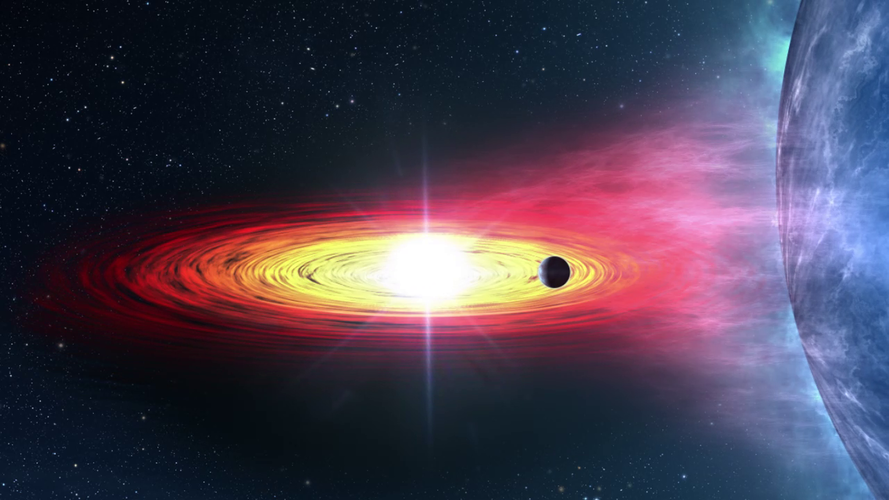
This artist’s animation depicts the possible detection of a planet candidate in an X-ray binary in the M51 (“Whirlpool”) galaxy called M51-ULS. This system contains either a neutron star or a black hole in orbit with a star about 20 to 30 times the mass of the Sun (large blue star). The neutron star or black hole is pulling material from its companion star, creating a disk of material that glows in X-rays (red, orange, and yellow). Astronomers using ESA’s XMM-Newton and NASA’s Chandra X-ray space telescopes detected a decrease in the X-rays from M51-ULS over about a 3-hour period. They interpret this dimming as being a “transit,” when a planet passing in front of the disk along the line of sight to Earth and blocks some or all of the light. This is depicted in the animation as the planet moves across the view from left to right and the bright light from material close to the neutron star or black hole briefly dims. By searching for exoplanets — that is, planets outside our Solar System — using this X-ray technique, scientists hope to look for these worlds at much greater distances than have previously been possible.
Click here for original story, X-ray binary transit by a possible planet
Source: ESA Top Multimedia